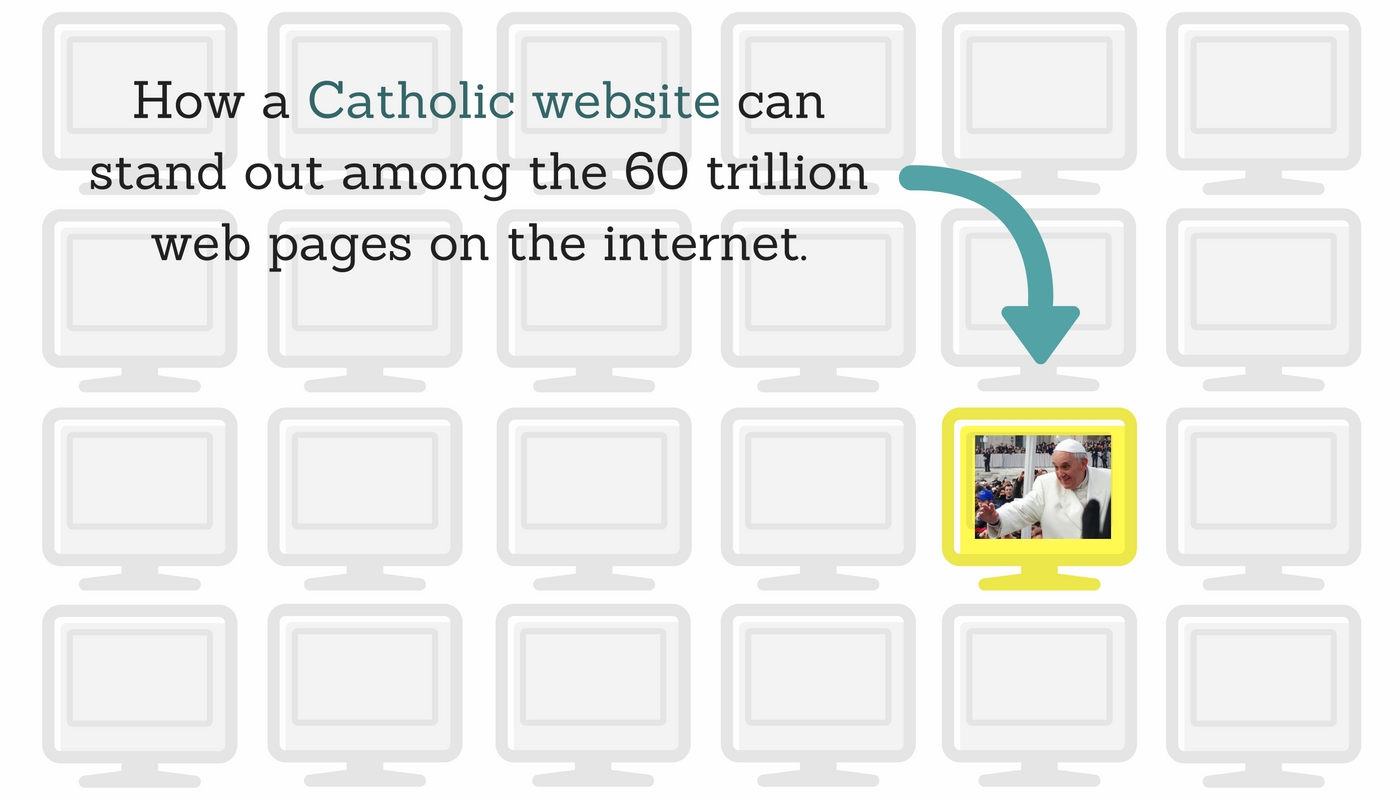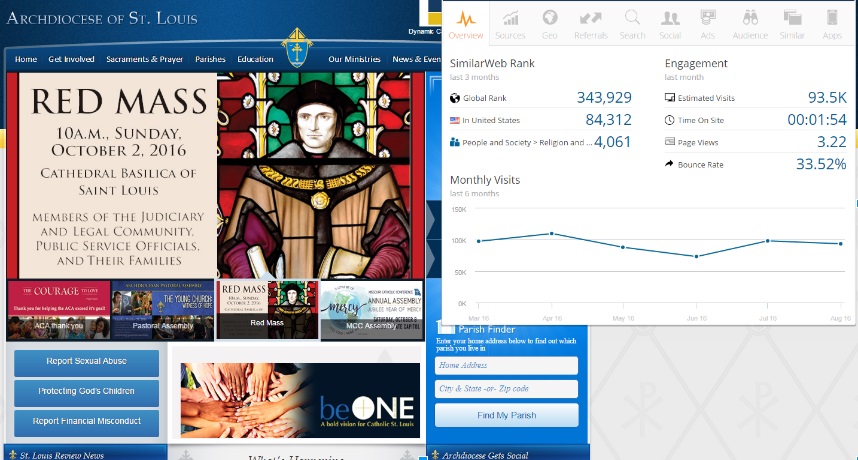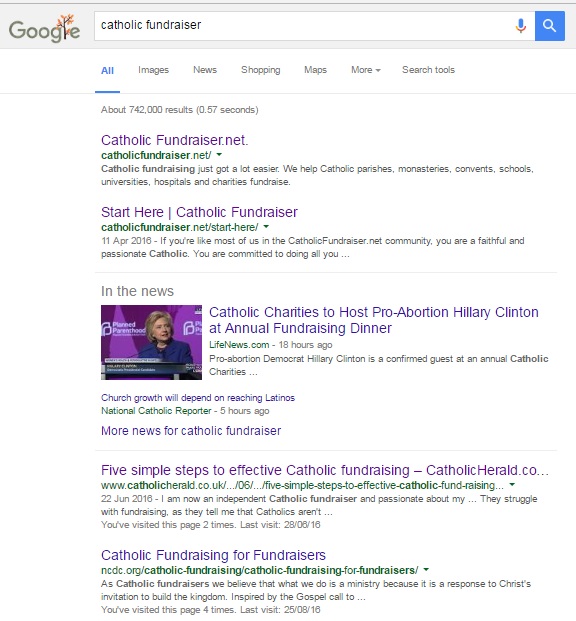How to master online fundraising? I used to think that having a great website meant having great photos, interactive graphics, a mobile-friendly interface, and fun content about what my organization does. Therefore, that’s what I did. I created beautiful and exciting websites for charities, thinking the fresh look would attract people and donations.
Well, after testing different styles and researching what works and doesn’t work, I found that my assumptions were wrong. I wasn’t attracting people, and I wasn’t raising many funds. If anything, I spent a lot of time and money on a website that did not produce many results.

While the look of a website is important, I discovered that you must have a sound basis before the site will attract people and bring in donations. You may have high-quality photos that move from left to right with the click of the mouse, but if the foundation is not in place, all that work will not mean much because few people are visiting your website. And the fewer people visiting translates to fewer people donating.
“Everyone who listens to these words of mine and acts on them will be like a wise man who built his house on rock.” – Matthew 7:24
What do I mean by a strong foundation for your website?
A strong foundation refers to the elements you place that make your website visible to people when they browse the internet. The more people who visit your website means more possibilities for online fundraising.
Google estimates that there are 60 trillion individual pages on the web, and this number increases daily. Each day over 3.5 billion searches are completed. I looked how often people search ‘Mass times’. The score of 100 in the chart below means the search (Mass times) ranks at the top of all Google searches during Christmas and Easter.

You can use the Google trends tool to look up how popular any word or phrase is.
These statistics are important for two reasons. First, they confirm that people are interested in Christianity. And second, people are using the internet to discover more about the faith. This is good news because it means we can use the internet to attract people to what you do.
How then do you attract these millions of individuals to your website when they have 60 trillion options? My research has uncovered the four foundational steps to attract more people to your website, increase engagement, and therefore increase donations.
Step 1: Make sure people can find your website.
It can seem daunting to think anyone will find your website among these trillions of pages. Or, you may just assume that anyone who is interested in your ministry will eventually discover you on the web. Well, both of these assumptions significantly reduce the number of people who do arrive at your homepage.
For example, when someone searches for a Catholic church in their area, you will be surprised how many protestant communities will appear above your website in the results. You will be even more surprised by how many of them describe themselves as Catholic. I’ve come across a few. I’ve also come across evangelical communities who quote either the Pope or a Catholic saint. I guess their strategy is to pinch lapsed Catholics or anyone else who searches for a local Catholic church wanting to get learn more about the faith.
Regardless as to why Protestants do this, the fact is when people search for Catholic content, they unsuspectedly find at the top of search results non-Catholic material.
Luckily, with a few minor adjustments, you can avoid this from happening. I recommend using the Google Search Console to check that Google and other search engines know your site exists and correctly categorize the pages.
Search engines like Google crawl (collect data) the internet looking for websites. Once they find yours, they then analyze the content, index each page based on the keywords, and then rank your site based on several factors. These factors include the words you use on each page, the number of external links to your website, the number of visits per month, and how often you update the content.
To improve how high you rank in search results, Google also offers instructions on how to make your website more visible. Because Google wants to provide its users with the best search results, the search engine has a vested interest in people correctly explaining the content of their websites.
Step 2: Use words that match what people search.
The words that you use on your website have vital importance in how often people find you on the internet. You may think that people find your site because they searched specifically for you and your work. This is rarely the case. Most people come across your website because the words you use match the words they searched.
For example, if you are a young adults ministry, more than likely, a young adult or parent will search upcoming Catholic youth events, networks of young Catholics in their community, and useful resources for young Catholics. If your homepage displays your mission statement, photos of past events, and generic information about what you do, and countless menu options on the particularities of your ministry, your website likely won’t be at the top of the search results. Therefore, fewer people will visit your site.
Therefore, if you want to increase the number of visitors (thereby increasing engagement with your organization and eventually donate to you), I recommend that you use words that match the most popular words used in searches. You can easily do this by using Google’s Keyword Planner. This free tool tells you what words people most frequently use when searching for your kind of content. It also recommends other favorite words you can use.
Selecting which words you use is beneficial for two reasons. First, you match the words people are looking for when browsing the internet, thereby directly giving them an answer to their query. And second, Google will rank you higher in search results because you are matching what its users want to find.

Let’s take a practical example.
The top searched words for the topic ‘pro-life’ are as follows.
– Abortion
– Human rights
– Pro-choice
– For life
– Abortion facts
You will notice that the word pro-life doesn’t rank among the top five. Therefore, you want to use these words on your website to attract more people because that is what people are typing in the Google search bar.
What’s even more interesting is to look at the keywords of Planned Parenthood.
– Abortion pill
– Birth control pills
– Abortion clinics
– STD testing
– Emergency contraception
Now, you can use these words on your pages to attract people to your website who are considering an abortion. How wonderful would it be to have a pro-life website rank higher than Planned Parenthood’s site? It’s possible if you use this strategy.
Therefore, rather than only displaying information about who you are and what you do, I suggest that you research what words people are typing in their browsers. You can also use CoSchedule’s free Header Analyzer to help you write sentences with these keywords that attract people’s attention.
Step 3: Provide visitors with the most useful information possible.
When hosting an event, you can get a sense of how people engage with you by observing what they do. With this information, you can make your next event even better. Web analytics can do the same for your website by telling you how people interact with your site.
I do want to explain that web analytics is not like spying on someone’s personal information. Rather, just as you would observe someone at an event, you notice what the person does, what he says, whom they speak with, and how long he stays. Analytics offers you the same information for your virtual event: your website.
When someone browses your pages, web analytics tracks what content people are reading, how long they stay on each page, and how much of a page they look at, all the while letting the person remain anonymous. The analytics are then presented to you in a way that helps you understand what people do when visiting your website.
You can then make the necessary changes to improve your content, providing people with even more useful information. As you do this more and more, Google will notice that people are visiting your website more often and spending longer periods of them. As a result, your website will be ranked even high in search results, thereby increasing the number of site visitors. You can see why web analytics are an essential part of a solid web foundation.
I recommend using Google Analytics which is free. In particular, I suggest reviewing each month these five pieces of data:
- The number of unique visitors
- The top three pages viewed
- The top three clicked links
- The top five sources (how people arrive at your website)
- The conversion rate of each page (contacted you vs.total number of visitors)
By tracking this data, you will know how to make your site more useful and relevant. Are people interested in what the pope said? Are they looking for who God is? Do they want to know where you are located and when Mass is? Who is visiting your website? Are they practicing Catholics, lapsed Catholics, or non-Catholics? If you find that the majority of people visiting your website are reading the page ‘Who is God?’ or ‘How to become Catholic?’, you can assume that they are not Catholic.
By knowing your audience, you can provide more useful information. The more people see you as someone who is knowledgeable and resourceful will translate to improved online fundraising. You could also remove that annoying donate button which no one clicks. Even though I am a fundraiser, I don’t think displaying this button on your homepage is the best way to say ‘Welcome to the Catholic Church’! Why? Let me explain.

Let’s look at an example
Take a look at the web traffic statistics for the following four diocesan websites.
| Diocese |
Local city population |
Number of Catholics |
Monthly website visits |
Yearly website visits |
New York
archny.org |
5.85 million |
2.64 million |
30 thousand |
360 thousand |
| St Louis archstl.org |
2.23 million |
500 thousand |
90 thousand |
1.08 million |
Chicago
archchicago.org |
6.25 million |
2.44 million |
65 thousand |
780 thousand |
Houston
archgh.org |
6.20 million |
1.19 million |
50 thousand |
600 thousand |
Did you notice that the Diocese of Saint Louis has the highest number of monthly visits to its website, even though it has the fewest Catholics? It also has the smallest city population. Therefore, how can they generate so much more traffic? If you visit all four websites, you will see why this is. The Diocese of St Louis has skillfully made its homepage relevant to Catholics, lapsed Catholics, and non-Catholics.

Now consider how many people visit each site per year. Among the one million visitors to the Diocese of Saint Louis’s website, how many do you think would be interested in becoming Catholic, attending Mass, or making a donation? Whatever the number is, it is 3x larger than New York’s figure, while having 1/4 the number of Catholics and 2/5 the population. Of course, website traffic is not the full measurement of how effective someone is in evangelizing. However, I can assume that the more traffic you generate to your website increases the probability of people engaging in faith activities.
And because you don’t have to run from parish the parish and spend hours surveying what people think, you can do all this analysis from your desk. This frees more time to actually evangelize and do the work you wanted to do in the first place.
Step 4: Have each page focus on one key point which interests people.
You can attract even more people to your organization’s website by targeting each page to cover a single keyword that is most frequently searched. For example, if you are a local Catholic parish, and you know that people search for Mass times quite frequently, you want one page dedicated to Mass times. This means giving ‘Mass times’ its own page apart from the other sacraments. You can do this for baptisms, weddings, and funerals.
The following five phrases rank the highest in Google searches. Therefore, I recommend you have a web page dedicated to each one of them.
1. Catholic Church
2. Catholic prayers
3. Mass times
4. Catholic Church near me
5. Other Christian keywords such as God, Jesus, and Bible
Take for example the words, ‘Catholic Church near me’. People type this phrase when searching for a church nearby. Therefore, you want to have a page that has these words.
You can tag each page of your website with keywords by leveraging Search Engine Optimization (SEO). It sounds complicated, but SEO is quite straightforward and easy to use. SEO simply means the words you tag a web page with so search engines know what it is about and can index it correctly among the other trillion pages on the internet.
The three key SEO elements of any web page you need to complete are:
Page Title: [High-level description of what page is about. This appears in blue in the search results of Google]
Page Description: [Explains what the page is about in a few sentences. This appears in gray in Google searches]
Page Keywords: [Tells a search engine what the keywords are so it can properly index the page]
You can use free tools such as All-In-One SEO and Yoast SEO to make sure each page of your website is properly tagged.
Let’s take another example.
When you type ‘catholic fundraiser’ into Google, my website ranks at the top of the list, beating all the other 742,000 search results and all the other more established fundraising consulting firms. In fact, I have three (one being an article I wrote for the Catholic Herald) of the top five results. I did this without spending any money on advertisements because I simply added ‘Catholic fundraiser’ in the SEO fields to indicate to Google that my website is relevant to anyone looking for a Catholic fundraiser.

Very few organizations add the SEO details to their pages. This means if you do this simple step, your website will quickly rank higher than there’s. This is why SEO is part of having a solid web foundation. It’s quick, easy, free, and powerful.
How does this all link to online fundraising?
A solid foundation with your website helps you with fundraising because it increases the number of people who know about your organization through the internet. We must take on the responsibility for the evangelization of this “digital continent”, as Pope Benedict called it. Your website is a fresh haven to attract the millions of people who use the internet each day to find answers to their questions.
The key to increase donations is to attract more people’s attention to your work and to have them keep coming back. Your website can do this 24/7 and on a large scale. With so many people looking to the internet for answers, you can point them to the right answers. Catholic answers.
As Jesus said, you must build on rock, not sand. By spending time on these four foundational elements of your website, you can build from the ground up. Your website, like your home, parish, or religious community, must not be built on sand.
Therefore, before you place prominently the donate button and spend large sums of money on advertising to attract people to your next capital appeal campaign, begin by making sure people can find your website, engage with your content, and consider their involvement. You will be surprised how many people come to you asking, “I’m so happy to have found you. How can I support this incredible work you are doing?”
Discussion Question: How solid is your website’s foundation?
Please let me know what you think by leaving a comment below.
NOT SUBSCRIBED TO RECEIVE THE WEEKLY CONTENT? FIX THAT! IT’S COMPLETELY FREE.

*** REMEMBER TO CLICK THE SHARE BUTTONS AND TELL YOUR COLLEAGUES, PARISH LEADERS, PARISH PRIEST, AND OTHERS ABOUT THIS ARTICLE. THANK YOU. ***








